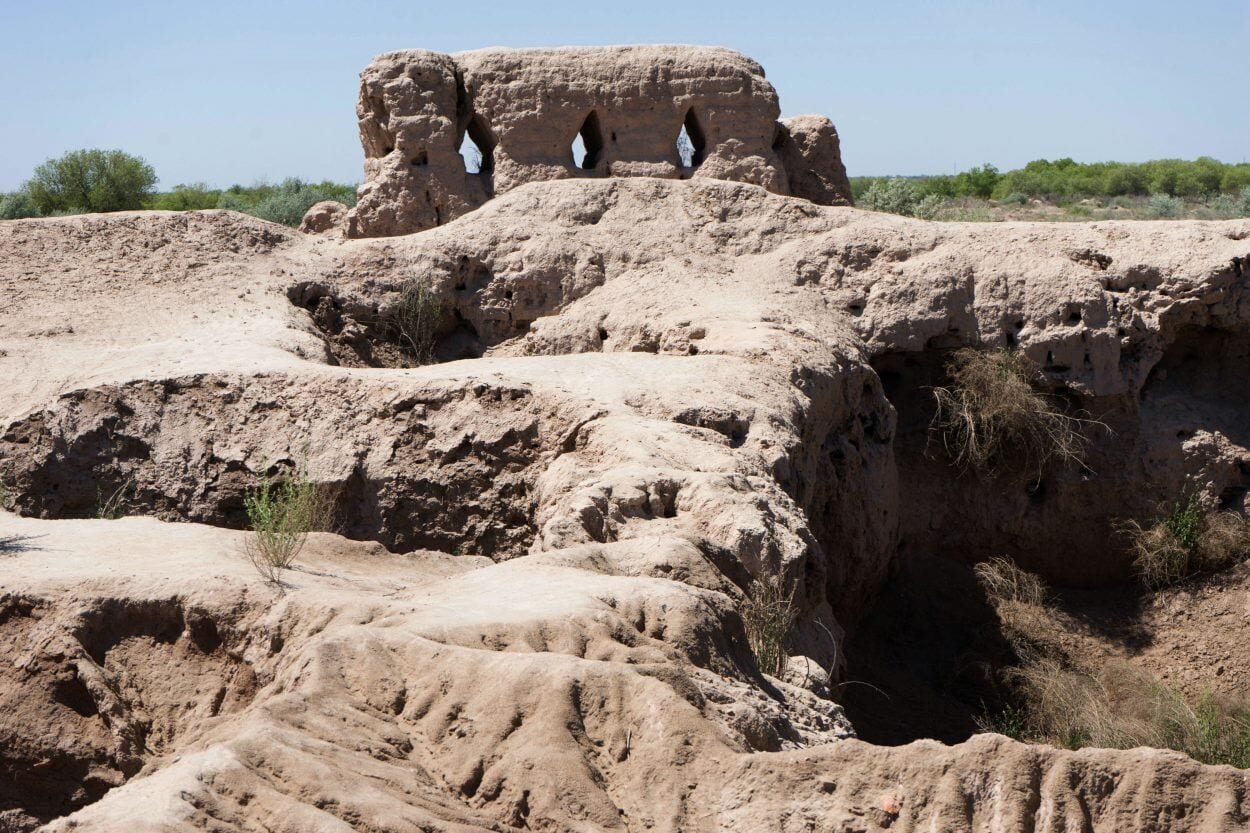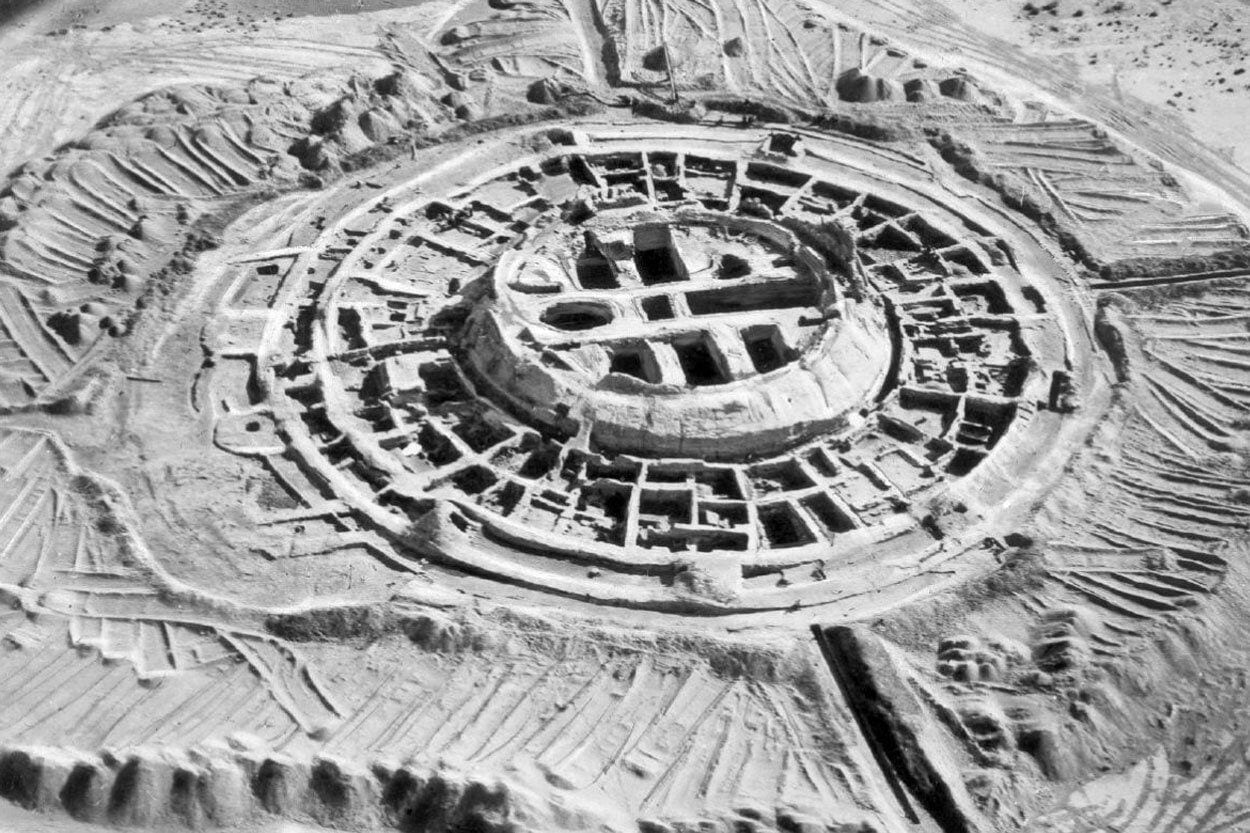Koi Krylgan Kala, also called Qoy Qırılg’an qala locally is an archaeological site in the Ellikqal’a District of the Republic of Karakalpakstan, within Uzbekistan.
Koi Krylgan Kala was constructed around 400 BC to serve as a large ceremonial centre and complex during the Chorasmian, Afrighids dynasty that ruled over a large oasis region called Khwarezm.
At its centre, is a monumental building laid out on a circular plan with eternal fortified walls and 9 towers that encompass a circle 87 metres in diameter. The outer walls housed various dwellings, whilst the inner circle some 42 metres in diameter, served initially as a possible burial ground for Khorezmian rulers, with a later dynastic cult temple and shrine.
The site was built during a period of irrigation and economic prosperity, which allowed the construction of large settlements in waterless, deserted regions. Koi Krylgan Kala was occupied until AD 400 when it was subsequently abandoned.

The first archaeological research was conducted in 1938, by Sergey Tolstov, Yakh’ya Gulyamov and A. I. Terenozhkin of the Khorezm Archaeological Expedition who were conducting archaeological works at the 7th – 8th century AD fortified manor of Teshik qala from the Afrigid era.
The team decided that Koi Krylgan Kala was sufficiently unusual to warrant further study and conducted excavations from 1951, with subsequent excavations in 1952 and 1957 that exposed large sections of the monument.
The excavations found large quantities of fine variegated vessels, rhytons, jugs and plates that were decorated with reliefs representing human heads, animals, griffins, and a mounted Scythian warrior.
The project also discovered numerous terracotta figures of gods and goddesses (most notably Anahita – venerated as the divinity of “the Waters” and hence associated with fertility), human heads, horses, a monkey and a griffin with the body of a horse.
The earlier excavations have left Koi Krylgan Kala exposed to the elements, leaving the monument in a badly eroded state with much of the mud-brick material recycled by the local inhabitants living in the region.







